Biography
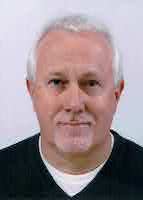 Johan Goossens was born on June 3rd, 1960 in
Bergen op Zoom, a small town (~40.000 people at the time) in the south of
The Netherlands. In the early 70s, he developed a great interest in electronics
which rapidly developed into an electrical and software engineering
obsession. At the age of 14, he collected first generation TV sets
(to reuse the tubes) and through his parents he met a
Phillips
research engineer who donated boxes full of experimental electronic
parts and tons of old electronics magazines. Johan read every one of
those magazines and soon started to build fun projects like radios,
oscilloscopes and amplifiers. At the age of 16, he even build a
small 'computer' based on Intel's very first chip. The
Intel 4004
based JoGo computer (as in Johan Goossens) was battery powered, had
40 bytes of memory (no, I did not forget the word kilo, mega or
giga), switches and push buttons for input and 4 red LEDs for
output.
Johan Goossens was born on June 3rd, 1960 in
Bergen op Zoom, a small town (~40.000 people at the time) in the south of
The Netherlands. In the early 70s, he developed a great interest in electronics
which rapidly developed into an electrical and software engineering
obsession. At the age of 14, he collected first generation TV sets
(to reuse the tubes) and through his parents he met a
Phillips
research engineer who donated boxes full of experimental electronic
parts and tons of old electronics magazines. Johan read every one of
those magazines and soon started to build fun projects like radios,
oscilloscopes and amplifiers. At the age of 16, he even build a
small 'computer' based on Intel's very first chip. The
Intel 4004
based JoGo computer (as in Johan Goossens) was battery powered, had
40 bytes of memory (no, I did not forget the word kilo, mega or
giga), switches and push buttons for input and 4 red LEDs for
output.
Slowly the electronics obsession turned to music and soon enough
speaker cabinets, amplifiers, effects boxes and light shows were
created. Initially, Johan ran a 'mobile disco' with friends but
playing DJ was not satisfying enough so after discussions with
school buddies, Johan, Willem and Marc decided to start a band. Marc
was a classically trained acoustic guitar player who could sing very
well, Willem decided to learn the bass and Johan added percussion to
his list of obsessions.
As with most teenage bands, the early days were rough and the band
quickly went through a number of different lineups. Johan and Marc
remained a constant, Marc's sisters (Nicole and Vivianne) added
great vocals, Leo and later Don (no mafia connections) replaced
Willem on bass and finally Suus and later Ruud added electronic
piano/keyboard to the mix. "Hippo"
became a popular local band but military service and other real life
interruptions made the band members drift apart.
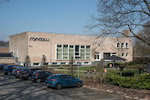 During those band years, most musicians went to the same high school
(Roncalli Scholengemeenshap) that had a unique education style based on the
Dalton Plan
(Dalton Systeem in Dutch). In this system, students are given a lot
of freedom to determine their own speed of learning and many classes
are a strange combination of classic lectures, discussion and
interaction. For Johan, this turned out to be very important as he
clearly belonged to the crippling introverts tribe. Without
Roncalli, he would have never been able to learn how to act as an
extrovert.
During those band years, most musicians went to the same high school
(Roncalli Scholengemeenshap) that had a unique education style based on the
Dalton Plan
(Dalton Systeem in Dutch). In this system, students are given a lot
of freedom to determine their own speed of learning and many classes
are a strange combination of classic lectures, discussion and
interaction. For Johan, this turned out to be very important as he
clearly belonged to the crippling introverts tribe. Without
Roncalli, he would have never been able to learn how to act as an
extrovert.
One interesting thing however that could have changed the course of
history. As a shy young man, Johan typically did not engage in the
historical, political or social discussions during history and
civics classes (same teacher). One day during elections in the
Netherlands, Johan (out of the blue) decided to speak up and he
voiced his slightly left of center progressive views. This was
clearly not appreciated by his far left teacher who put him down
immediately with those famous words:
"What do you know about this? You're just the son of a
milkman!". Well, that encounter could have made Johan an extremely crippling
introvert for the rest of his life but something special happened.
The other students did not accept the teachers reaction and picked a
fight with him for being elitist and discriminatory. A debate raged
for 2 hours (Johan took part as well) and at the end, the teacher
apologized (half heartedly). Johan's extrovert journey had started.
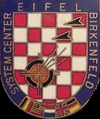 To avoid conscription in the
Royal Netherlands Army, Johan voluntarily joined the
Royal Netherlands Air Force
in 1981 as a cadet at the Air Officers School in
Gilze-Rijen. During his time in the service (the
Cold War),
Johan worked on the multinational Air Command and Control system
EIFEL in
Birkenfeld, Germany
as a programmer/analyst. He left the Royal Netherlands Air Force in
1988 as a Captain to pursue a civilian career with
NATO Headquarters SACLANT
in
Norfolk, VA.
To avoid conscription in the
Royal Netherlands Army, Johan voluntarily joined the
Royal Netherlands Air Force
in 1981 as a cadet at the Air Officers School in
Gilze-Rijen. During his time in the service (the
Cold War),
Johan worked on the multinational Air Command and Control system
EIFEL in
Birkenfeld, Germany
as a programmer/analyst. He left the Royal Netherlands Air Force in
1988 as a Captain to pursue a civilian career with
NATO Headquarters SACLANT
in
Norfolk, VA.
As in most bands, the drummer gets the pretty girl and during the
Hippo years, Johan started to date Nicole (yes, the singer of the
band and sister of his best friend). In 1983, Nicole also moved to
Germany and in 1988, they got married and moved to the US.
From 1988 to 1993, Johan worked for SACLANT as the System Software
Section Chief in support of maritime command and control. In 1993,
Johan and Nicole moved to
San Diego, CA,
to work at the US Navy Research Laboratory NOSC/NRaD (now called the
Naval Information Warfare Center Pacific) as the NATO liaison officer.
In 1998, Johan returned to Norfolk, VA, to take the position of User
Domain Support Branch Head for the ACLANT System Support Center
(ASSC). In that role he was responsible for rapid system
development, in-service support and training for some NATO systems.
These products constantly adopted emerging technologies, saw 15
major updates in 12 years and were proliferated throughout the
entire Alliance and numerous NATO/Partner Nations (at one point
there were more than 400 installations in 25 countries).
After years of not playing in a band, Johan started
Mid-Life Crises (MLC) in 1999 and very soon
Nicole joined. An old passion was rediscovered and lots of dollars
later, The Goossens' house was full of PA equipment, a recording
studio and a light show.
 In 2006, Johan became the
ACT
Technology and Human Factors Branch Head responsible for ACT’s
Command and Control (C2) Concept Development, ACT’s Cyber Defence
program, Federated Mission Networking (FMN), Enterprise
Architecture, the Coalition Warrior Interoperability Exercise (CWIX)
and the Think-tank for Information, Decision and Execution
superiority (TIDE). Johan authored the original FMN concept, the
NATO C2 Capstone Concept and was a driver in establishing Cyberspace
as an operational domain in NATO.
In 2006, Johan became the
ACT
Technology and Human Factors Branch Head responsible for ACT’s
Command and Control (C2) Concept Development, ACT’s Cyber Defence
program, Federated Mission Networking (FMN), Enterprise
Architecture, the Coalition Warrior Interoperability Exercise (CWIX)
and the Think-tank for Information, Decision and Execution
superiority (TIDE). Johan authored the original FMN concept, the
NATO C2 Capstone Concept and was a driver in establishing Cyberspace
as an operational domain in NATO.
From 2007 until 2009, Johan and Nicole also played in a band called
Cujo Panic. Sadly both
MLC and Cujo Panic are currently on an
Eagles-style "until hell freezes over" break which led to
the "Rock on 11" initiative where
they try to make great covers of popular classic rock songs.
In 2018, Johan established the ACT
Federated Interoperability Branch
responsible for capability planning, interoperability
standardization, verification and continuation. In this capacity, he
acted as the Chairman of the multi-national FMN Capability Planning
Working Group (CPWG), continued to work on C2 concepts and
researched advanced application of data science and artificial
intelligence in NATO.
In 2019, Johan got diagnosed with stage 2 bladder cancer. You can
read his entire story in his "war on cancer" blog. After a 20 month battle with cancer and numerous
infections, Johan is now cancer free and getting back to a regular
life.
 On January 1st, 2021, Johan retired after almost 40 years of
continuous international service. Johan was awarded the prestigious
NATO Meritorious Service Medal (MSM)
in 2013 and the Golden Badge of the Estonian Ministry of Defense in
2015.
On January 1st, 2021, Johan retired after almost 40 years of
continuous international service. Johan was awarded the prestigious
NATO Meritorious Service Medal (MSM)
in 2013 and the Golden Badge of the Estonian Ministry of Defense in
2015.
Today, Johan and Nicole happily live in
Virginia Beach, VA
where both spend time on their hobbies. Johan and Nicole have 2
children: Martijn and Melanie.

Working under COVID-19 conditions;
Directing a multinational event
with over 1000 people from 25 Countries
spread out over 10 Timezones
from a home office
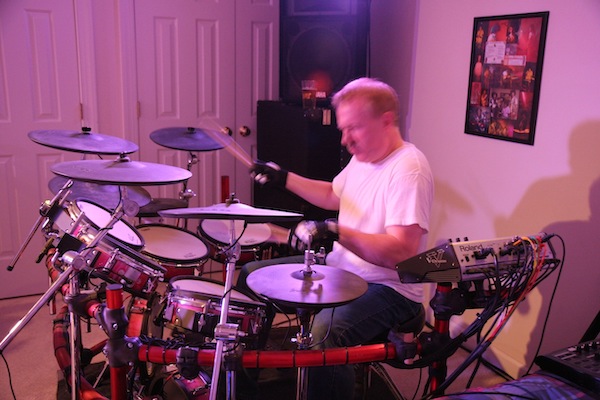
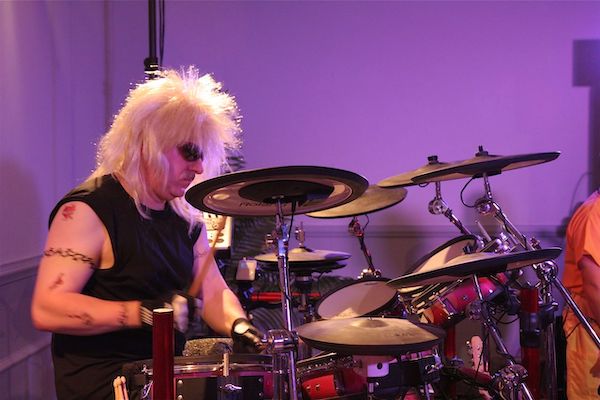
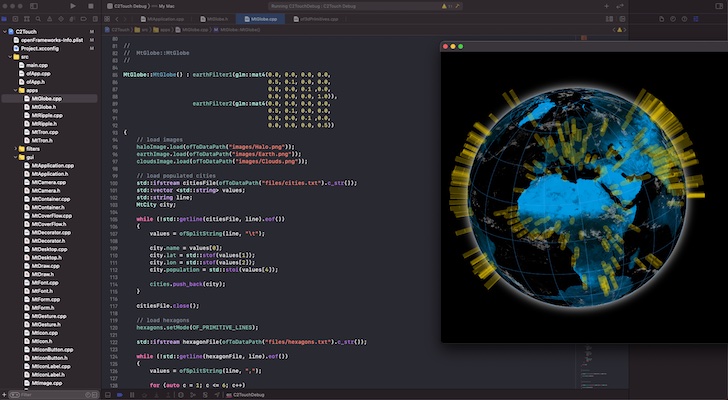
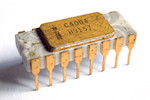 Electronics and software engineering have played a major role in my
life since I was about 12 years old. In my
Electronics and software engineering have played a major role in my
life since I was about 12 years old. In my
 In my late teens, I worked my ass off in a supermarket and got
myself a
In my late teens, I worked my ass off in a supermarket and got
myself a
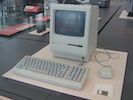 Luckily for me, I could afford a Macintosh in the early 90s and have
owned almost every model since the
Luckily for me, I could afford a Macintosh in the early 90s and have
owned almost every model since the
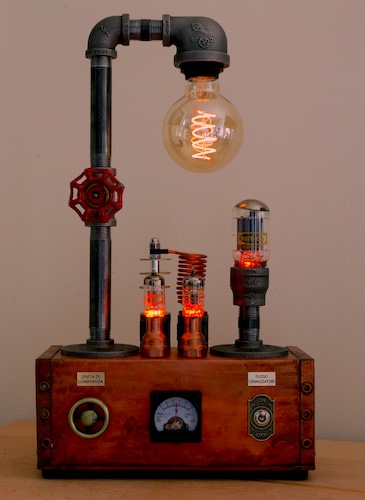
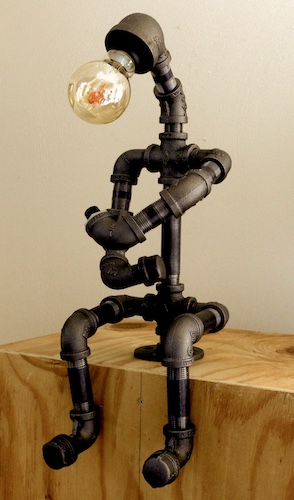

 Johan Goossens was born on June 3rd, 1960 in
Johan Goossens was born on June 3rd, 1960 in
 During those band years, most musicians went to the same high school
(
During those band years, most musicians went to the same high school
( To avoid conscription in the
To avoid conscription in the
 In 2006, Johan became the
In 2006, Johan became the
 On January 1st, 2021, Johan retired after almost 40 years of
continuous international service. Johan was awarded the prestigious
On January 1st, 2021, Johan retired after almost 40 years of
continuous international service. Johan was awarded the prestigious
